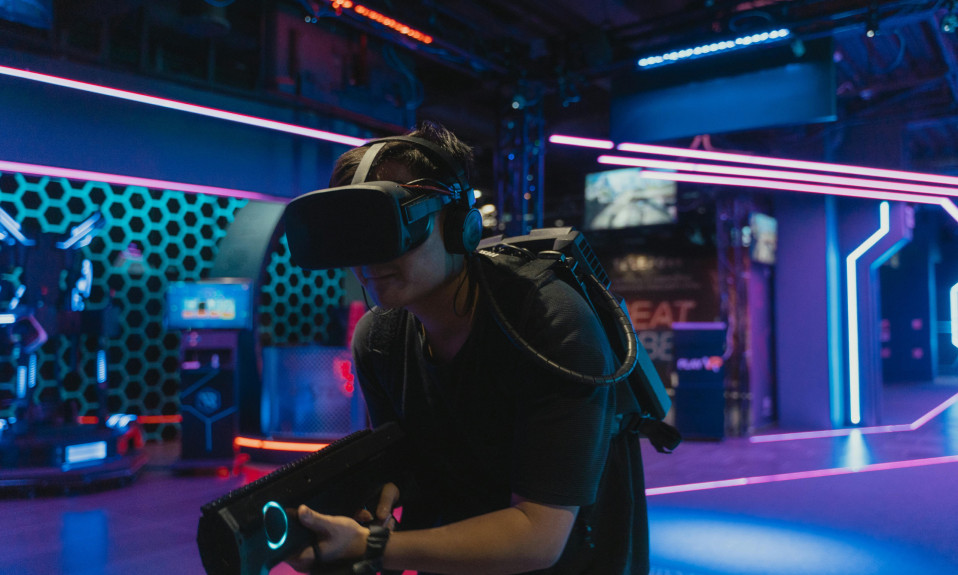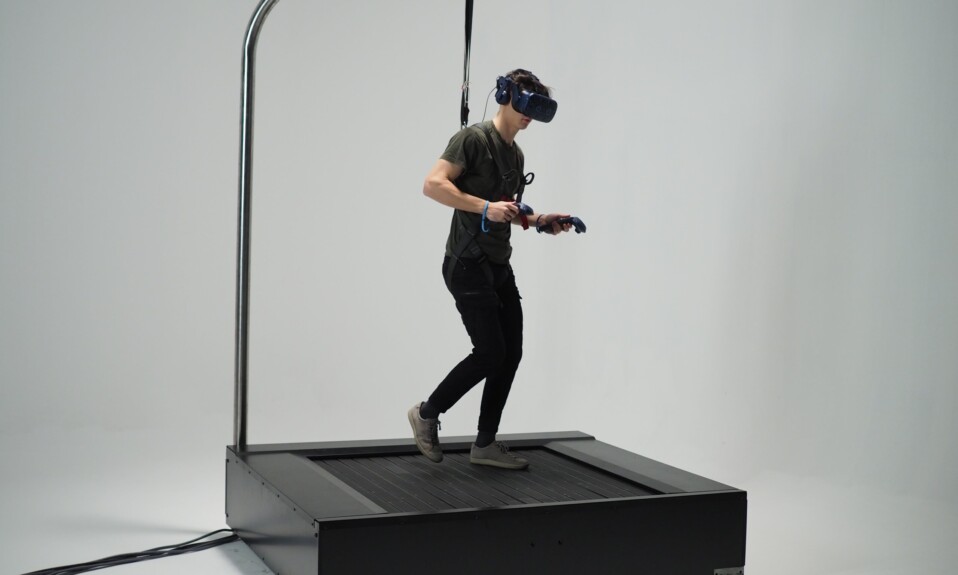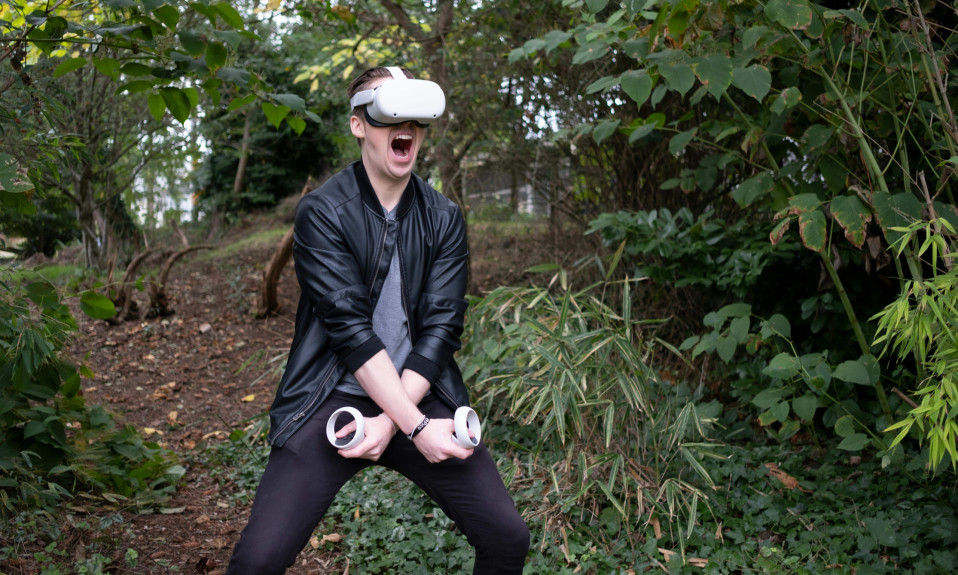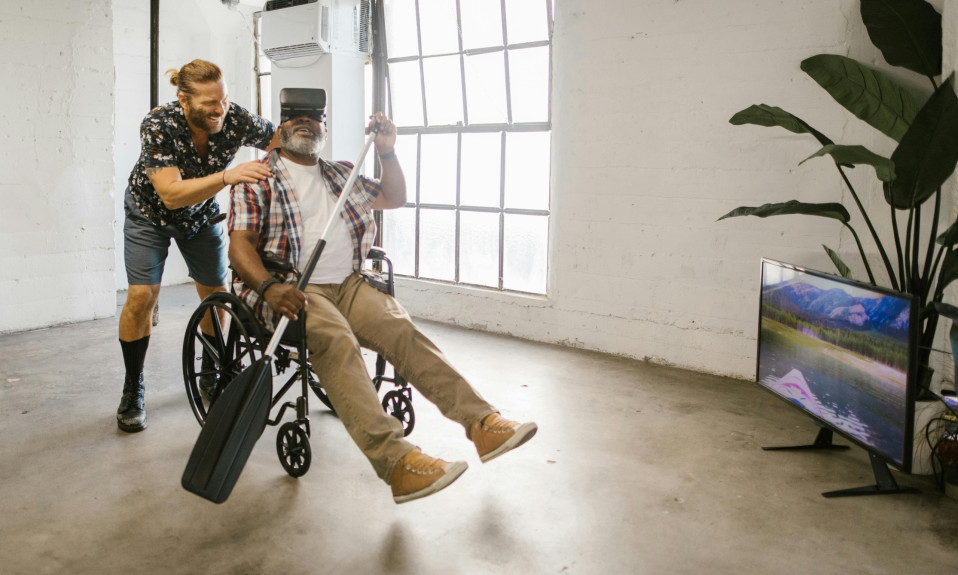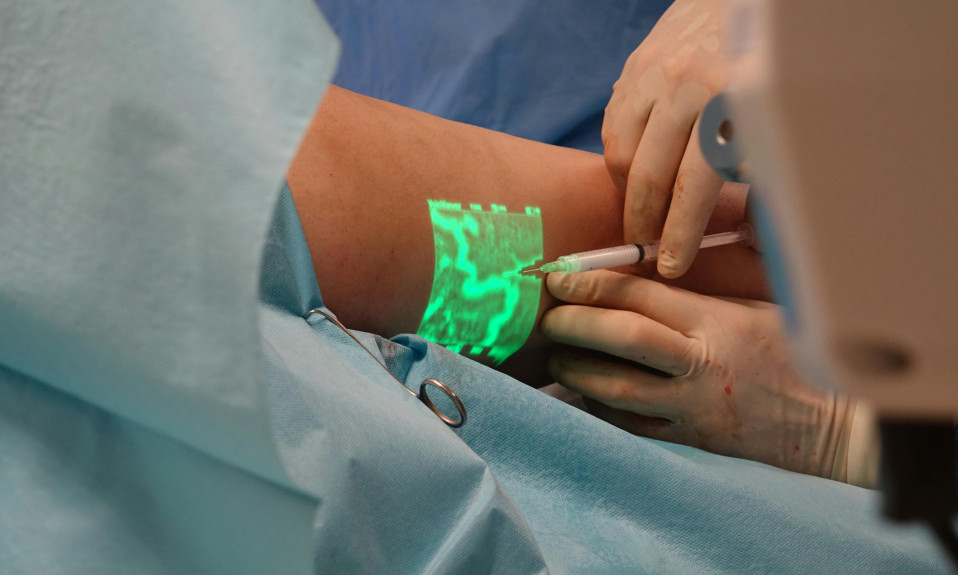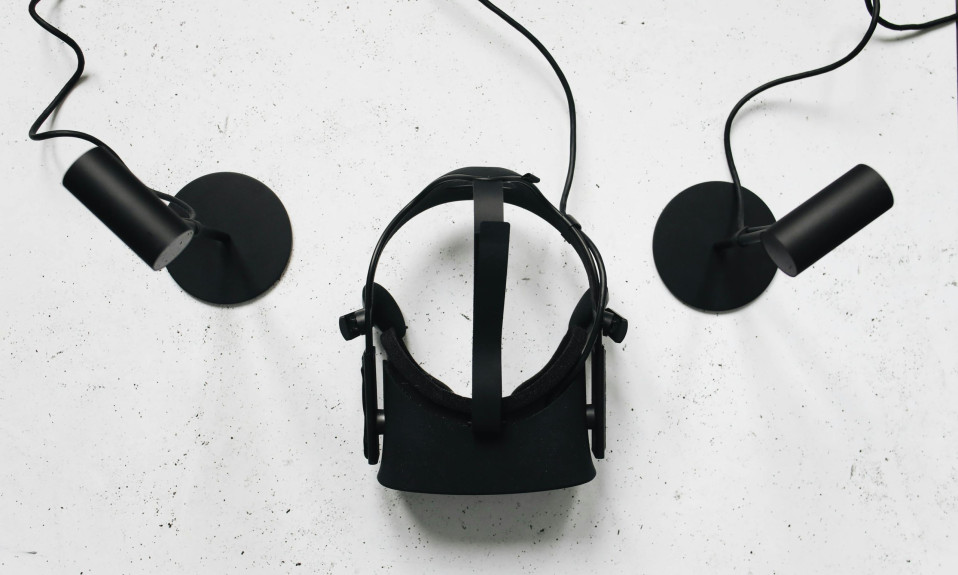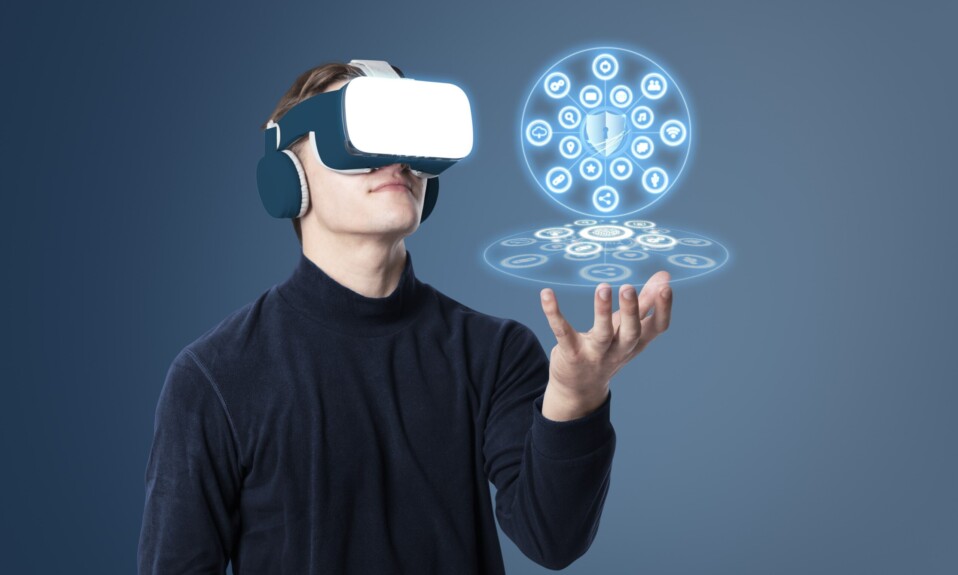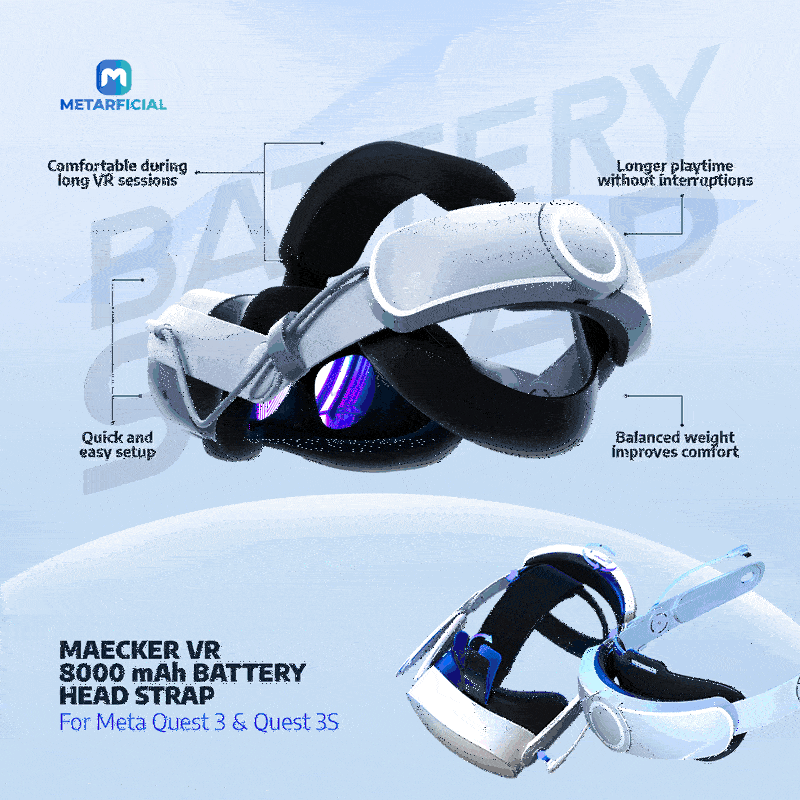Haptic suits are wearable vests or full-body suits designed to enhance user interactions within virtual environments by providing physical sensations that complement visual and auditory cues.
VR haptic suits provide a wide range of physical sensations by engaging specific muscle groups and stimulating sensory receptors in the skin and underlying tissues.
This enables users to feel touch, perceive the force of virtual collisions, and explore the texture and weight of virtual objects through sensorimotor stimulation.
Delivering physical stimuli as users explore virtual environments aligns with the core principle of immersive virtual reality—creating a digital world that is difficult to distinguish from reality.
VR haptic suits are poised to make this possible through a combination of several feedback mechanisms, including vibrotactile feedback, force feedback, thermal feedback, and muscle stimulation.
Haptic feedback has become a standard feature in everyday technologies, appearing in mobile phones, gaming controllers, VR controllers, and now, VR haptic suits.
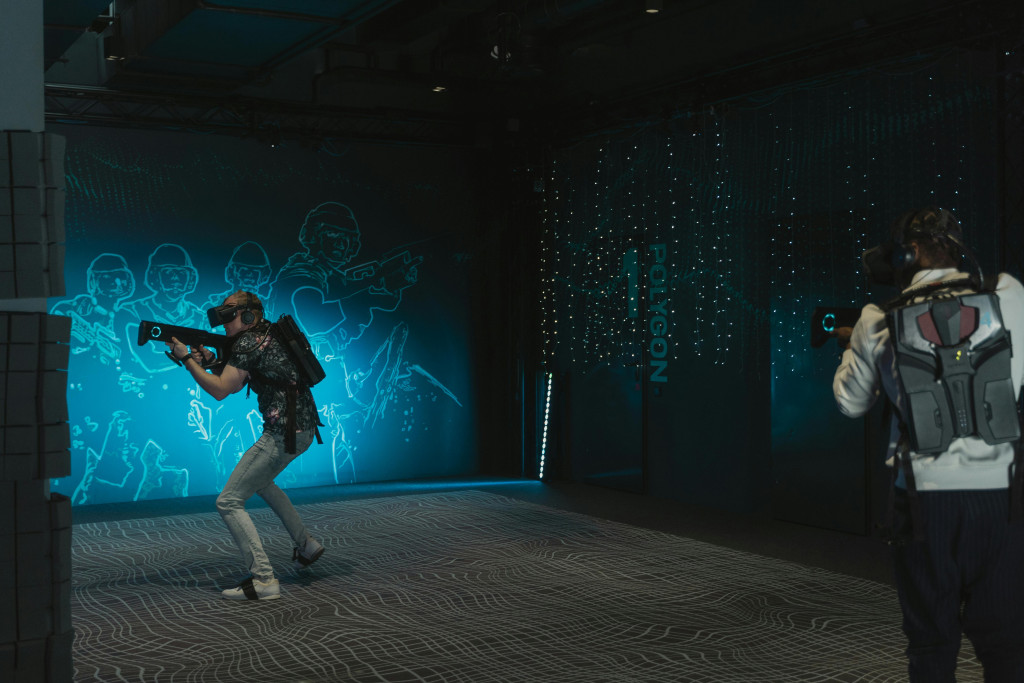
For instance, when a user takes damage while playing a VR first-person shooter game, a haptic suit can simulate jolts of impact, such as a punch of air to the chest—making the experience more immersive.
Some models of haptic suits incorporate tactile sensing capabilities such as motion capture, gesture recognition, and intelligent identification for full-body tracking and interpreting users’ physical interactions.
This blog post examines various types of VR haptic suits, classifying them based on their underlying feedback mechanisms and providing a detailed explanation of how they function.
Without further ado, let’s get started.
I do not want a discount, said no one ever! Upgrade your VR setup today with top-tier accessories—use code META20 for 20% off + free shipping on orders over $15. Level up your VR experience now ➡️ Shop & Save!
Quick Navigation
Types of VR Haptic Suits Based on Feedback Mechanisms
Several types of haptic vests and full-body suits exist, each offering distinct combinations of technologies that determine how physical feedback gets delivered to users.
Mainstream models of haptic suits typically deliver a single feedback mechanism. However, some prototypes employ a fusion of multiple mechanisms to provide hybrid, multi-sensory stimulation.
The three major types of VR haptic suits based on their feedback mechanisms include vibrotactile, force feedback, and electrical muscle stimulation (EMS) haptic suits.
Vibrotactile Haptic Suits
Vibrotactile feedback is perhaps the most common form of haptic feedback mechanism. It utilizes mechanical vibrations to deliver physical sensations to vibration-sensitive skin receptors.
A typical example of a vibrotactile haptic suit is the bHaptics TactSuit Pro Vest.
These suits employ various types of vibrating motors and actuators, such as eccentric rotating mass (ERM) motors, linear resonance actuators (LRA), and, in some cases, piezoelectric actuators—to simulate sensations like tapping, rumbling, or buzzing.
Vibrotactile haptic suits can only simulate a limited range of physical sensations due to size constraints, the strength of their actuators, and their dependence on vibration-based feedback.
In a 2023 study, two researchers from the University of Parma, Italy, sought to evaluate the effectiveness of vibrotactile feedback in virtual navigation-based tasks.1
Using the bHaptics Tactot DK3 haptic vest, an external motion tracking device, and other essential virtual reality accessories, participants performed a search and rescue mission under different scenarios.
The bHaptics vibrotactile vest provided repulsive haptic feedback to help participants avoid collisions with virtual objects while navigating the environment.
The study results showed that vibrotactile feedback improved spatial awareness in virtual environments and served as an effective complement to visual feedback.
Vibrotactile feedback is especially effective in virtual experiences where physical vibrations replicate real-world sensations, such as the sharp recoil of gunfire or the gentle patter of rainfall.
I do not want a discount, said no one ever! Upgrade your VR setup today with top-tier accessories—use code META20 for 20% off + free shipping on orders over $15. Level up your VR experience now ➡️ Shop & Save!
Force Feedback Haptic Suits
Force feedback haptic suits rely on mechanical systems such as pneumatic actuators, servo motors, and cable-driven mechanisms to deliver realistic sensations in virtual environments.
Most of these sensations simulate contact forces and, in some cases, approximate the effects of non-contact forces through creative mechanical workarounds.
Unlike vibrotactile feedback, force feedback doesn’t rely solely on vibrations. Instead, it delivers a broader range of physical sensations and forces, such as pressure, active resistance, collision impacts, and compression.
A notable prototype of a force feedback VR haptic suit is the TeslaSuit, especially when paired with the TeslaGlove—an exoskeletal glove that provides force and tactile feedback using mechanical resistance.
Pneumatic-Acoustic (PA) Multimodal Haptic Suit
In 2023, another group of researchers developed a novel multimodal haptic suit that combined pneumatic and acoustic actuators to deliver both vibrotactile and force feedback in virtual reality.2
According to their research, pneumatic actuators can stimulate mixed sensory receptors through inflatable air bladders, potentially helping users perceive pressure and the impact of force feedback in virtual interactions.
The suit, named the Pneumatic and Acoustic (PA) Suit, also featured an amplifier that generated sufficient power to drive the vibration motors, enabling consistent vibrotactile feedback.
The researchers conducted several user studies to evaluate the usefulness and effectiveness of the PA Suit in two scenarios: one involving a virtual ball collision and the other simulating a virtual explosion.
The results of their studies showed that the Pneumatic and Acoustic suit enhanced participant engagement by providing active vibrotactile and force feedback during virtual simulations.
Electrical Muscle Stimulation (EMS) Haptic Suits
The use of electrical muscle stimulation for haptic feedback presents one of the most compelling approaches for delivering physical sensations in virtual reality.
EMS haptic suits transmit controlled electrical impulses to targeted nerves and muscle groups via conductive patches embedded within the suit, ensuring direct contact with specific areas of the body.
These impulses induce involuntary muscle contractions and simulate the physical effects of virtual interactions through contact forces such as active resistance, pushing and pulling, and motion constraints.
Unlike vibrotactile or force feedback systems, EMS doesn’t rely on surface-level vibrations or mechanical actuators to stimulate physical contact. It interacts directly with the muscular system, offering a deeper and more physically engaging form of feedback.
A prominent example of an EMS-based VR haptic suit is the TeslaSuit, which combines Electrical Muscle Stimulation (EMS) and Transcutaneous Electrical Nerve Stimulation (TENS) to deliver tactile feedback.
A 2017 study explored the use of electrical muscle stimulation to provide haptic feedback for simulating heavy objects and interactive elements in virtual reality.3
The prototype employed a medically compliant 8-channel muscle stimulator to deliver electrical impulses, along with an HMD that provided both visual and audio cues and a motion capture system to track users’ hand coordination.
To simulate the weight of heavy objects or the resistance of pushing a brick wall in VR, the EMS system triggered specific muscle groups to generate counterforce in the opposite direction of the applied force.
For instance, when a user tries to lift a virtual box, the system sends electrical impulses to the triceps, shoulders, and pectoral muscles to create tension and simulate the perceived weight of the object.
The research team evaluated the EMS system using three different scenarios. Participants in the study found it most effective when the virtual resistance or counterforce aligned with what they would expect from a real-world version of the object.
Other types of haptic feedback mechanisms include ultrasonic feedback, which uses sound waves to simulate tactile sensations, and thermal feedback, which delivers hot or cold sensations in virtual environments.
I do not want a discount, said no one ever! Upgrade your VR setup today with top-tier accessories—use code META20 for 20% off + free shipping on orders over $15. Level up your VR experience now ➡️ Shop & Save!
Challenges and Limitations of Existing VR Haptic Suits
The development of haptic devices dates back to the late 1990s, but more than three decades later, many of the challenges and limitations in VR haptic technology remain strikingly similar.
Some of the key challenges and limitations of existing VR haptic suits include:
- Haptic suits often struggle to accurately model and deliver realistic tactile feedback and physical sensations within virtual environments.
- Conventional feedback mechanisms, such as vibrotactile feedback, are limited in their ability to simulate the broad range of physical sensations encountered in everyday life.
- Many haptic feedback devices are developed in isolation, making standardization and integration with broader haptic systems challenging.
- A significant portion of haptic feedback devices remain in the prototype or experimental stage, while commercially available units tend to be high-cost and inaccessible to most users.
- Widespread consumer adoption of VR haptic suits remains extremely limited due to technical complexity, a lack of adequate content designed to integrate with these devices, and the absence of compelling mainstream use cases.
In the 2017 study on electrical muscle stimulation for haptic feedback, researchers identified four key criteria for delivering realistic tactile sensations in virtual environments: believability, impermeability, consistency, and familiarity.
For haptic feedback to feel realistic, the sensations must reflect the physical properties of virtual objects, and the visual, auditory, and tactile cues should align and remain consistent throughout the experience.
Final Thoughts on VR Haptic Suits
VR haptic suits enhance realism in virtual reality by providing tactile feedback that allows users to perceive touch, feel the impact of virtual collisions, and experience the physical properties of virtual objects.
These suits or wearable vests utilize various haptic feedback mechanisms—such as vibrotactile feedback, force feedback, thermal feedback, and electrical muscle stimulation to deliver sensations to skin receptors and targeted muscle groups.
However, several challenges and limitations still prevent these mechanisms from accurately replicating real-world sensations and delivering consistently realistic tactile feedback to users.
We hypothesize that future iterations of haptic feedback suits may incorporate neural interfaces to bypass surface-level nerve stimulation and deliver tactile impulses directly to the brain, potentially improving the accuracy of tactile sensations and offering a greater sense of immersion in virtual reality.
I do not want a discount, said no one ever! Upgrade your VR setup today with top-tier accessories—use code META20 for 20% off + free shipping on orders over $15. Level up your VR experience now ➡️ Shop & Save!
References:
- Monica, R., & Aleotti, J. (2023). Improving virtual reality navigation tasks using a haptic vest and upper body tracking. Displays, 77, 102417. ↩︎
- Kang, D., Lee, C.-G., & Kwon, O. (2023). Pneumatic and acoustic suit: Multimodal haptic suit for enhanced virtual reality simulation. Virtual Reality, 27, 1647–1669. ↩︎
- Lopes, P., You, S., Cheng, L.-P., Marwecki, S., & Baudisch, P. (2017). Providing haptics to walls & heavy objects in virtual reality by means of electrical muscle stimulation. Proceedings of the 2017 CHI Conference on Human Factors in Computing Systems (pp. 1471–1482). Association for Computing Machinery. ↩︎

